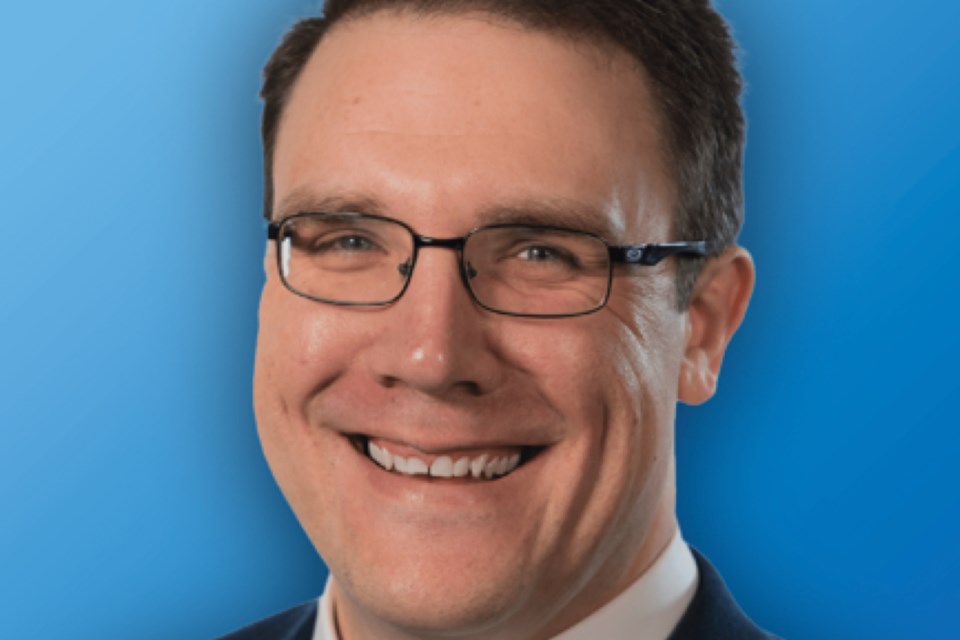MOUNTAIN VIEW COUNTY - Sundre-area MLA Jason Nixon, whose riding includes wilderness areas occupied by grizzly bears, says plans to allow hunting of problem grizzly bears will increase public safety in the district and elsewhere in the province.
“As Alberta’s grizzly population continues to grow and their territories expand, Albertans and their livestock are experiencing more conflicts with bears,” Nixon told the Albertan.
“Alberta’s government is taking action to protect the safety and property of Albertans by allowing hunters to hunt identified problem bears.
“This approach, in addition to continued investment in the BearSmart program, will help minimize conflict with problem animals and support the safety of families in our communities.”
The provincial government recently announced that it is “taking action on problem grizzlies responsible for an increasing number of negative interactions with people”.
Specifically, the province is creating a new network of wildlife management responders to help stop dangerous and deadly grizzly bear attacks on people and livestock.
When a problem animal like a grizzly is identified, members of the approved network will help provide rapid conflict response times across all regions of Alberta, Todd Loewen, minister of Forestry and Parks, said in a release.
This response will include tracking and euthanizing problem animals, while still following all rules and regulations already in place. This is not a bear hunt; this is a measure to ensure the safety of humans and livestock, he said.
“The loss of even one human life because of a grizzly bear attack is one too many,” he said. “We are taking a proactive approach to help Albertans co-exist with wildlife through our new wildlife management program.”
Paul Fraser, chairman of Mountain View BearSmart Society (MVBS), says conflict prevention remains key to keeping people safe from grizzly bears and other wildlife.
“The best way to minimize conflicts between people and grizzly bears is to prevent conflicts from occurring in the first place,” Fraser told the Albertan.
Education is the prime focus of the society as a means to reduce human- bear conflict and promote safety for both humans and wildlife, he said.
“Conflict prevention is the effort that Alberta Forestry and Parks, the public, and other agency or non-governmental organizations focus on as a primary strategy to reduce human-bear conflict,” he said.
Conflict prevention itself can include education – such as brochures, press releases, presentations, social media – attractant management on public and private land – such as approved bear-resistant garbage containers – installing and maintaining an effective electric fence, and increasing human tolerance, he said.
“Conflict response is necessary to elevate public safety and to build or maintain tolerance for grizzly bears,” he said.
“If the conflict is such that the issue is not likely to be resolved with application of the conflict prevention tools mentioned above, bear trapping and either hard release, relocation, or euthanasia is a necessary alternative.”
MVBS will continue to rely on the public, conservation groups and other agency or non-governmental organizations to “determine human use of the landscape and grizzly bear conservation in the province,” he said.
“As a not-for-profit society, MVBS strives to promote bear and wildlife awareness through education, public information, and notification systems while remaining neutral on issues relating to bear and wildlife conservation, hunting and trapping.”
Devon Earl, a conservation specialized with the Alberta Wilderness Association, says she has many questions about the new program, including regarding public consultation.
“It took a really long time for the grizzly hunt to be suspended in the first place,” Earl said. “It took a lot of biologists and a lot of members of the public reaching out to government decision-makers at the time saying we need to protect this animal as a threatened species.”
The province says the grizzly bear population has increased from 800 to more than 1,100 in recent years.
- With files from Jessica Lee, a Local Journalism Initiative Reporter.



